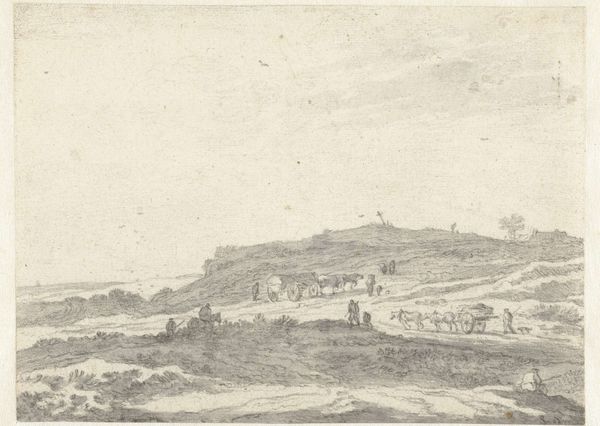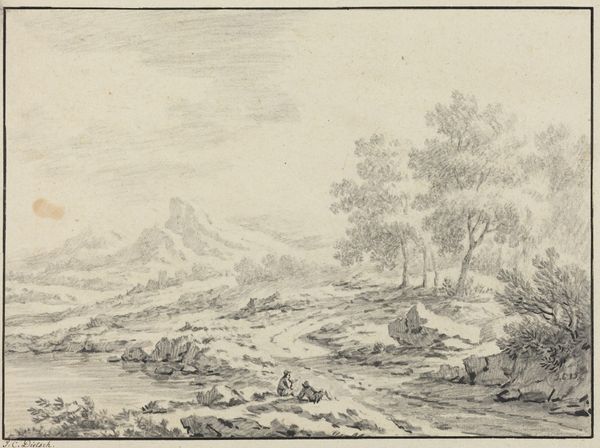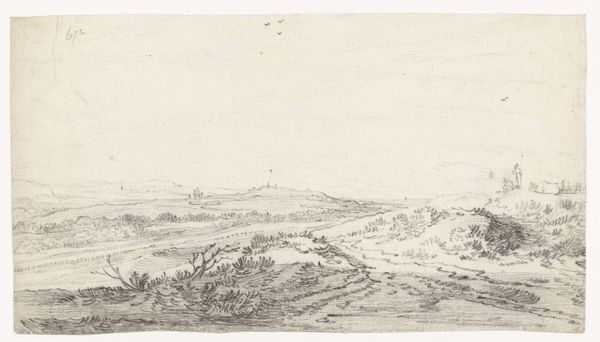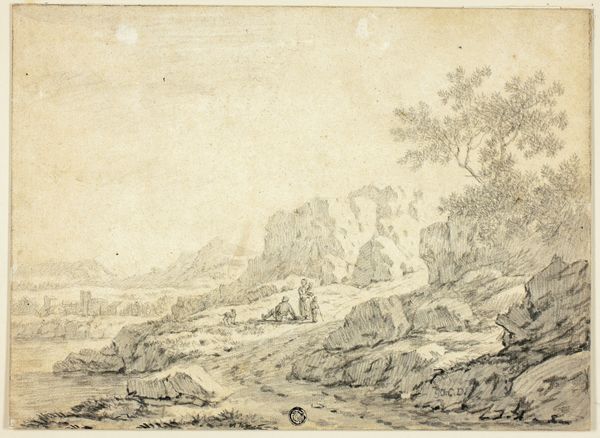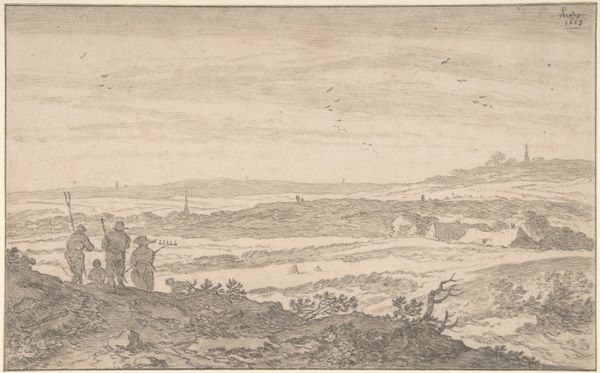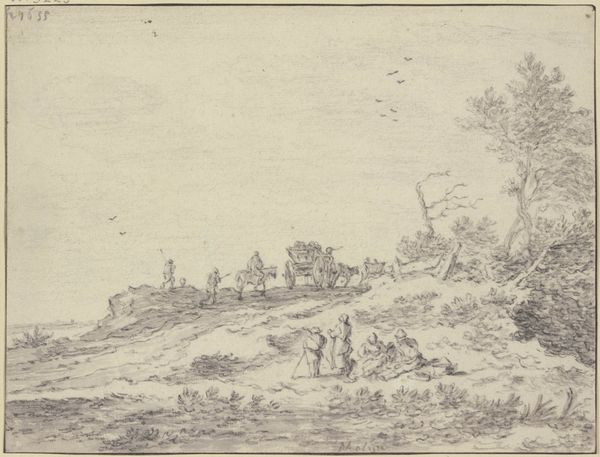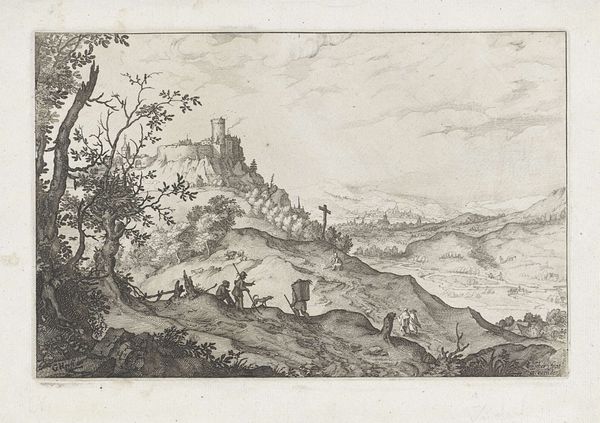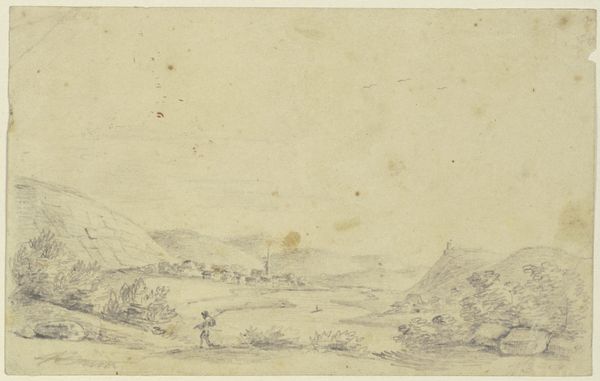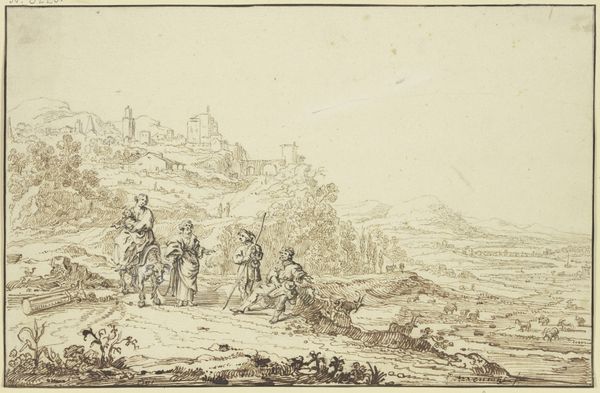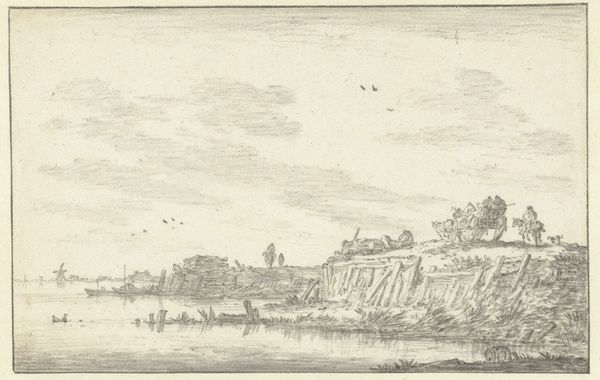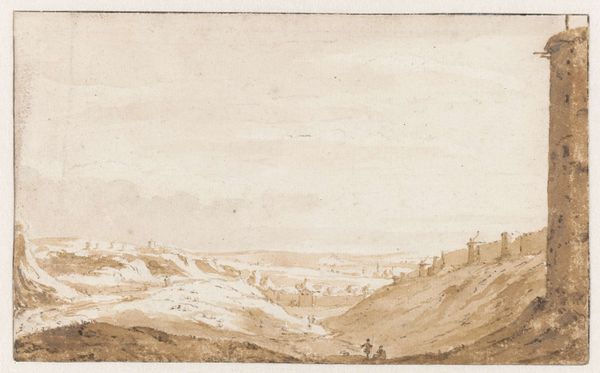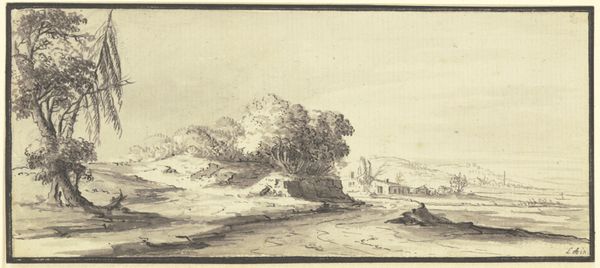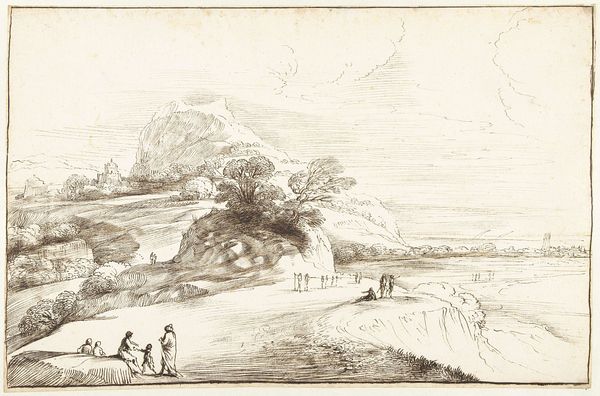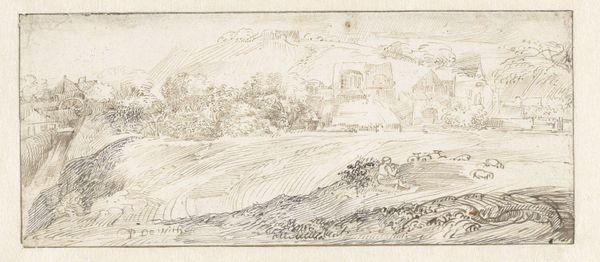
Hügelige Gegend, im Vordergrund ein Reiter und einige Fußgänger Possibly 1638
0:00
0:00
drawing, dry-media, graphite
#
drawing
#
baroque
#
landscape
#
dry-media
#
graphite
#
sketchbook drawing
Copyright: Public Domain
Curator: Pieter Molyn the Elder likely created this graphite drawing, titled "Hügelige Gegend, im Vordergrund ein Reiter und einige Fußgänger"—or “Hilly Landscape with a Horseman and Some Foot Travelers in the Foreground”—around 1638. It’s now part of the collection here at the Städel Museum. Editor: My initial reaction is one of quietude. It's a very hushed composition, almost monochromatic in its delicacy. The lines seem incredibly light and fleeting. Curator: The landscape itself is filled with symbols of journey and transition. People are on the move, indicating the ever-changing human condition, but what's interesting is the horseman's positioning; they dominate, but also seem a component of the surrounding landscape, like nature and civilization blending or competing for prominence. Editor: That's a good point about prominence. For me, the way Molyn uses the hatching to build up texture, particularly on the hillside, is mesmerizing. The density of the graphite gives it a sculptural quality. This draws your eye up towards this prominent hillside dotted with signs of civilization such as some sparse architecture at its apex. The line weight, almost uniform throughout, gives the figures no more emphasis than the blades of grass in the foreground. Curator: I see a Baroque impulse, even in the subtlety of this work on paper. Note the artist’s use of diagonals—the sloping hill—that adds dynamism to a rather tranquil scene. Consider the social context too. During the Baroque period, art moved to explore common lives of ordinary people more closely than some previous art historical periods. Editor: The negative space plays such an essential role here, too. The vast expanse of the sky not only makes the work readable as a classical Baroque-era landscape drawing, but imbues the composition with air and space; one has to almost search to make out forms on the horizon. Curator: Right. Also note how birds symbolize freedom and the transient nature of existence. But beyond overt symbolism, this work seems almost like a meditation on the landscape. I am wondering how the piece and its title may offer more detail in the landscape than immediately meets the eye. Editor: I'm struck by how contemporary this feels, even with its Baroque roots. The emphasis on texture, line, and the balance of positive and negative space feels so incredibly relevant. Curator: Yes, Molyn successfully conveys a world where humans and nature co-exist, each influencing and shaping the other. A world perhaps much like our own now, or as it used to be. Editor: The drawing is also about visual pleasure derived from basic pictorial structures, and maybe also, human connection to nature in its simplest form.
Comments
No comments
Be the first to comment and join the conversation on the ultimate creative platform.
